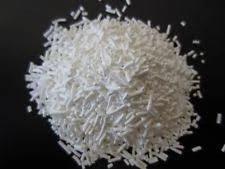
Exploring the Role of E330 as a Key Acidity Regulator in Food Products
Understanding E330 The Multifaceted Acidity Regulator
In the ever-evolving world of food science, various additives are continuously being utilized to enhance the texture, flavor, and safety of our food. One such compound that plays a significant role in the food industry is E330, commonly known as citric acid. This compound, derived primarily from citrus fruits, has become a staple in various culinary applications, thanks to its unique properties as an acidity regulator.
What is E330?
E330, or citric acid, is a natural organic acid that is found abundantly in fruits, especially citrus fruits like lemons, limes, oranges, and grapefruits. It is a colorless, crystalline substance that possesses a sharp acidic taste, which makes it a popular ingredient in many food products. Because of its ability to modify acidity levels, E330 is frequently employed in recipes as an acidity regulator.
Role as an Acidity Regulator
Citric acid serves to adjust the pH levels in food products, ensuring a balance that can enhance flavor, improve texture, and preserve freshness. By lowering the pH, citric acid effectively inhibits the growth of certain harmful bacteria, thereby extending the shelf life of food items. Its ability to maintain freshness is particularly advantageous in the production of canned goods, fruit juices, and soft drinks. This natural preservative not only enhances taste—adding a refreshing sourness—but also plays a key role in food preservation.
Applications of E330
1. Beverages E330 is commonly added to soft drinks, energy drinks, and fruit juices to provide a sharp flavor and to balance sweetness. It acts as a flavor enhancer, ensuring that beverages are both palatable and refreshing.
e330 acidity regulator

3. Confectionery Products In candies and sour-flavored sweets, E330 is used to create an appealing tanginess, enhancing the overall sensory experience of the product.
4. Dairy Products Citric acid plays a crucial role in cheese production, where it aids in the coagulation process, ultimately contributing to texture and flavor development.
5. Household Products Beyond the food scene, E330 can also be found in some cleaning products, leveraging its acidity for effective stain removal and deodorizing properties.
Health Considerations
Citric acid is generally recognized as safe (GRAS) by the Food and Drug Administration (FDA), provided it is consumed within the limits of normal dietary intake. While it is a commonly used additive, excessive consumption of citric acid can potentially lead to gastrointestinal discomfort or erosion of dental enamel, particularly in individuals who frequently consume highly acidic foods. However, for the vast majority of people, E330 is both a beneficial and safe addition to their diets.
The Environmental Impact
One notable aspect of citric acid is its biodegradability. Unlike synthetic acids, citric acid decomposes into harmless natural components, making it an environmentally friendly option among food preservatives. As more consumers seek sustainably sourced food products, citric acid aligns well with this demand.
Conclusion
E330, or citric acid, is much more than just an acidity regulator; it is a versatile ingredient integral to countless food products that enhance flavor, improve preservation, and maintain safety. Its natural origins and multifunctional properties make it a favored choice in both manufacturing and culinary applications. As we continue to explore and understand the roles of food additives like E330, it becomes increasingly clear that they are essential components in the pursuit of improved food quality and safety. Whether savoring a tangy candy or enjoying a refreshing beverage, the presence of citric acid is a reminder of how science and nature fuse to create the delicious experiences we often take for granted.
-
Pure Sodium Dichloroisocyanurate Dihydrate | Powerful DisinfectantNewsAug.29,2025
-
Industrial Chemicals: Quality & Purity for Every IndustryNewsAug.28,2025
-
Nitrile Rubber Honoring Strict Production StandardsNewsAug.22,2025
-
Aspartame Ingredients Honoring Food Safety ValuesNewsAug.22,2025
-
Fertilizer for Balanced Plant NutritionNewsAug.22,2025
-
Cyanide Gold Processing with High Purity AdditivesNewsAug.22,2025
-
Formic Acid in Textile Dyeing ApplicationsNewsAug.22,2025
Hebei Tenger Chemical Technology Co., Ltd. focuses on the chemical industry and is committed to the export service of chemical raw materials.
-

view more DiethanolisopropanolamineIn the ever-growing field of chemical solutions, diethanolisopropanolamine (DEIPA) stands out as a versatile and important compound. Due to its unique chemical structure and properties, DEIPA is of interest to various industries including construction, personal care, and agriculture. -

view more TriisopropanolamineTriisopropanolamine (TIPA) alkanol amine substance, is a kind of alcohol amine compound with amino and alcohol hydroxyl, and because of its molecules contains both amino and hydroxyl. -

view more Tetramethyl Thiuram DisulfideTetramethyl thiuram disulfide, also known as TMTD, is a white to light-yellow powder with a distinct sulfur-like odor. It is soluble in organic solvents such as benzene, acetone, and ethyl acetate, making it highly versatile for use in different formulations. TMTD is known for its excellent vulcanization acceleration properties, which makes it a key ingredient in the production of rubber products. Additionally, it acts as an effective fungicide and bactericide, making it valuable in agricultural applications. Its high purity and stability ensure consistent performance, making it a preferred choice for manufacturers across various industries.





